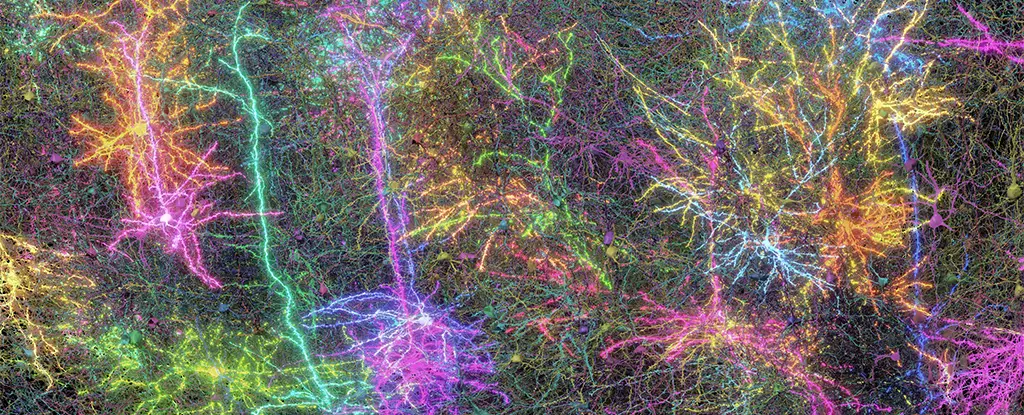Understanding the human brain is often likened to grappling with the expanse of the universe—ambitious, perhaps fruitless, but undeniably captivating. The latest research, which painstakingly maps a minuscule section of a mouse brain to unprecedented levels of detail, has the potential to illuminate some of the darkest corners of our neurological cosmos. Imagine a cluster of brain matter no larger than a grain of sand being meticulously analyzed to reveal the interconnections of 84,000 neurons. These neurons are intertwined by a staggering half a billion synaptic connections and elongate across 5.4 kilometers of neural wiring—what an incredible feat! This endeavor not only epitomizes human ingenuity but serves as a clarion call for a deeper investigation into our complex neural architecture.
The Lengthy Odyssey of Discovery
After nine arduous years and the combined efforts of over 150 researchers from 22 institutions—including heavyweights like Princeton University and the Allen Institute for Brain Science—the result of this groundbreaking research is nothing short of awe-inspiring. As neuroscientist Andreas Tolias articulately puts it, “The brain is this biological tissue inside our heads that makes us see the world, have feelings, make decisions.” This project did not merely chart the landscape of neurons; it intricately captured the essence of neurological interactions. Their strategies involved immersing a mouse in visual stimuli while it exercised, thus documenting its brain activity seamlessly during its exploration of a treadmill. The mouse’s brain was later sliced into 28,000 distinct layers for analysis, showcasing an ambitious blend of human effort and AI precision.
Connectome: The Neural Blueprint
The resulting “connectome,” a complex wiring diagram, pushes the boundaries of neuroscience considerably. While researchers have previously mapped insect brains, the sheer complexity and depth of this project represents a paradigm shift in our understanding of mammalian brain function. A connectome for mice, while laudable, provokes an underlying existential question: how far are we from achieving a connectome for the human brain? Princeton neuroscientist H. Sebastian Seung proclaims, “The connectome is the beginning of the digital transformation of brain science.” This statement rings with promise, evoking the potential for revolutionizing not just neuroscience but medicine itself.
Implications for Future Research
The ramifications of this research extend well beyond the academic realm. Accessibility to this data opens a floodgate of opportunities for researchers globally. With the human brain’s computational prowess remaining beyond that of even the most advanced AI systems, understanding this complex arrangement lays the groundwork for future breakthroughs. Not only does research like this foster insight into cognitive processes and decision-making, but it heralds a brighter future for tackling brain disorders such as dementia.
This technological advancement equips scientists with tools to identify patterns of connectivity that may lead to neurological disorders. The notion that connecting the anatomical dots can illuminate pathways to understanding diseases is a compelling one. It bridges a gap that often seems insurmountable, providing hope where there often exists despair.
The Ethical Landscape
Yet, as we dive headlong into this digitally transformed era of brain science, it’s crucial to navigate its ethical landscape with diligence. With the potential power to decode the mysteries of our brain comes the newfound responsibility to wield this knowledge with care. How might these revelations influence our understanding of consciousness and identity? Adding layers of complexity to existing debates regarding mental health, human agency, and psychological privacy could lead us into morally labyrinthine territories.
Surprisingly, despite the remarkable advancements, we must grapple with the reality that true comprehension of the human experience remains a distant goal. The road ahead is not merely paved with scientific discovery, but dotted with ethical conundrums that require nuanced dialogue and resolution.
In this intricate narrative of discovery and the unfolding drama of neuroscience, we stand at a precipice where the potential to illuminate human cognition exists hand-in-hand with our moral obligations, reminding us of the humanity underlying our scientific pursuits.


Leave a Reply